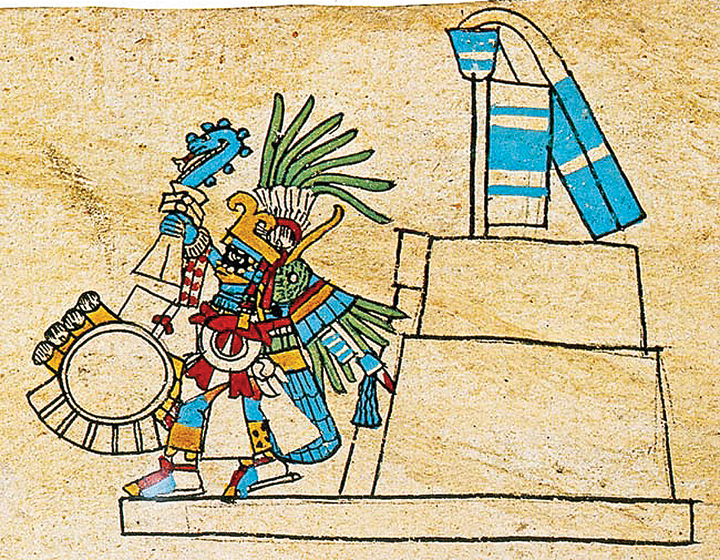A History of World Societies:
Printed Page 319
A History of World Societies Value
Edition: Printed Page 318
Life in the Aztec Empire
The Aztecs wrote many pictographic books recounting their history, geography, and religious practices. They also preserved records of their legal disputes, which amounted to vast files. The Spanish conquerors subsequently destroyed much of this material, but surviving documents offer a rich picture of the Mexica people at the time of the Spanish invasion.
Few sharp social distinctions existed among the Aztecs during their early migrations, but by the early sixteenth century Aztec society had changed. A stratified social structure had emerged, and the warrior aristocracy exercised great authority. Men who had distinguished themselves in war occupied the highest military and social positions in the state. Generals, judges, and governors of provinces were appointed by the emperor from among his servants who had earned reputations as war heroes. These great lords, or tecuhtli (teh-
Beneath the great nobility of military leaders and imperial officials was the class of warriors. Theoretically, every free man could be a warrior, and parents dedicated their male children to war, burying a male child’s umbilical cord with arrows and a shield on the day of his birth. In actuality, the sons of nobles were more likely to become warriors because of their fathers’ positions and influence in the state. At the age of six, boys entered a school that trained them for war. They were taught to fight with a ma-

The macehualtin were the ordinary citizens — the backbone of Aztec society and the vast majority of the population. The word macehualli means “worker” and implies boorish speech and vulgar behavior. Members of this class performed agricultural, military, and domestic services and carried heavy public burdens not required of noble warriors. Government officials assigned them to work on the temples, roads, and bridges. Unlike nobles, priests, orphans, and slaves, macehualtin paid taxes. Macehualtin in the capital, however, possessed certain rights: they held their plots of land for life, and they received a small share of the tribute paid by the provinces to the emperor.
Beneath the macehualtin were the tlalmaitl, the landless workers or serfs who provided agricultural labor, paid rents in kind, and were bound to the soil — they could not move off the land. In many ways the tlalmaitl resembled the serfs of western Europe, but unlike serfs they performed military service when called on to do so. Slaves were the lowest social class. Most were prisoners captured in war or kidnapped from enemy tribes. People convicted of crimes could be sentenced to slavery, and people in serious debt sometimes voluntarily sold themselves. Female slaves often became their masters’ concubines. Mexica slaves differed fundamentally from European ones, for they could possess goods; save money; buy land, houses, and even slaves for their own service; and purchase their freedom. If a male slave married a free woman, their offspring were free. Most slaves eventually gained their freedom.
Women of all social classes operated within the domestic sphere. As the little hands of the newborn male were closed around a tiny bow and arrow indicating his warrior destiny, so the infant female’s hands were wrapped around miniature weaving instruments and a small broom: weaving was a sacred and exclusively female art, and the broom signaled a female’s responsibility for the household shrines and for keeping the home swept and free of contamination. Save for the few women vowed to the service of the temple, marriage and the household were a woman’s fate, and marriage represented social maturity for both sexes. Pregnancy became the occasion for family and neighborhood feasts, and a successful birth launched celebrations lasting from ten to twenty days.